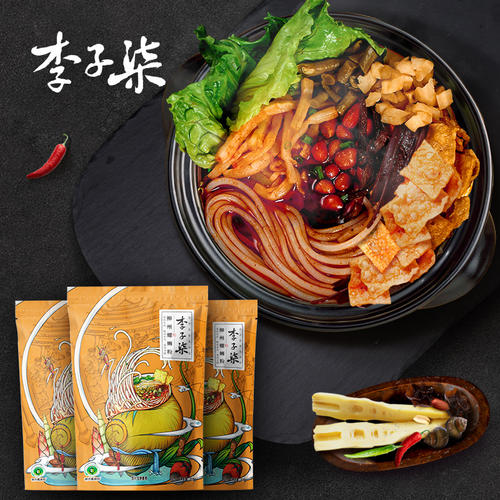General review:
In the first half of 2020, China’s FMCG industry was severely impacted by the COVID-19 epidemic. According to data from the National Bureau of Statistics, the total retail sales of consumer goods in January-February fell by 20.5% year-on-year. In March and April, the year-on-year decline was 15.8%. 7.5% [1], showing rebounding trend.
Affected the pandemic, Chinese consumers' disposable income and consumption expenditure have both declined, and long-time home quarantine has severely affected their traditional consumption habits and channels. Online e-commerce became a major channel, and consumers put forward higher requirements for food with more focus on health, nutrition, safety and natural ingredients. Under this situation, food categories performed differently, with some have shown obvious upward growth trajectory.
Prominent categories
Bird's nest
With the rise of health consciousness, traditional Chinese tonics, represented by the bird’s nest, have gained increasing traction among consumers.
During this year’s 618 mid-year shopping festival, fresh stewed bird's nest recorded remarkable performance. According to online data, from June 1 to June 20, Xiao Xian Dun fresh stewed bird's nest sales exceeded 245 million yuan, a year-on-year increase of 463% [2].
In JD, the turnover of bird's nest category increased by 72.4% year-on-year from June 1st to June 18th, of which the turnover of fresh stewed bird's nest brand Xiao Xian Dun increased by 573.6% year-on-year [3]. In Tmall, Xiao Xian Dun even surpassed imported health brand Swisse to clinch the No.1 title in the pharmaceutical category, becoming the first tonic brand in the history of Tmall 618 with sales over 100 million yuan [4].

Fresh foods (vegetable&fruit)
During this year’s Spring Festival (since January 24) when China was in the hardest time of fighting against the epidemic, orders from fresh suppliers soared: the sales of JD Fresh increased by 470% year-on-year; Wal-Mart's O2O "Home Delivery" sales increased by more than 4 times year-on-year; Meituan's daily order volume in Beijing reached 2-3 times of the pre-holiday order volume [5].
As China was gradually back to normality, people’s demand for fresh food kept high. Taobao data show that the growth of fresh food including meat, aquatic products and vegetables in March exceeded 180%, 85% and 136% respectively [6].
The Kantar Consumer Index shows that as of the end of May 2020, the Chinese fresh food market has increased by 16% year-on-year (the growth rate of FMCG during the same period was only 3%). The outbreak of the COVID-19 pandemic has prompted more consumers to switch to online channels to buy fresh food. Fresh food e-commerce platforms (Fresh Hema, MISSFRESH, etc.) grew by 5% and 8% respectively [7].
Pasteurized milk
During the epidemic, the Chinese National Health Commission and four industry associations have encouraged to drink “300 grams of milk or dairy products every day" to enhance immunity. Consumers pay more attention to improving immunity, and many Chinese people have begun to drink milk daily. Among various dairy products, the consumption of pasteurized milk, which is more in line with the fresh and healthy concept, has maintained rapid growth and is higher than normal temperature dairy products.
During February, Brightdairy, China’s leading pasteurized milk manufacturer, has seen its UBest Fresh Milk and Zhiyou Fresh Milk sales increasing by 5 times than usual. Also, its high-end fresh milk Jersey has tripled the sales [8]. The epidemic has brought consumers' focus on health to a new level. How dairy companies can satisfy the deliciousness and nutrition of dairy products while enhancing health and functionality will be the focus of future dairy product development.
Instant foods (frozen products, convenience foods)
As the epidemic has trapped everyone at home for two or three months, various types of convenience foods and frozen foods have become the first choice for consumers to stock up.
According to Tmall data, since February, the sales volume of convenience foods has increased by 700% year-on-year. According to JD Big Data, in February and March during the epidemic, sales of instant noodles and ham sausages increased by 210% year-on-year, and sales growth of self-heating products such as "Zi Hai Guo" even reached more than 400%. Suning's self-heating food category sales increased by 370.27% year-on-year [9].
Facing the booming market of convenient and instant food, many food brands have rolled out relevant products, including traditional hot pot brands like Haidilao, instant noodle brands like Kangshifu, snack brands like Three Squirrels and startup brands like Li Ziqi and Moxiaoxian. On the "Li Ziqi Tmall Flagship Store", the river snail rice noodle alone has recorded 1.5 million orders in a month.

Functional foods (health foods and supplements)
Health products rose as much as 11% [10] in this epidemic. On JD, the turnover of many domestic and foreign health products brands has grown rapidly, such as FANCL's year-on-year growth of 25 times, Swisse's year-on-year growth of 13 times, and CENOVIS's 10 times year-on-year growth. According to public data, in the first quarter, a total of more than 150 nutrition and health products merchants settled in JD [11]. In addition, Tmall health products category sales increased by 50% in March, and the best-selling products include protein powder, vitamins, probiotics, calcium tablets, etc. As for Suning, since April this year, Suning supermarket health products orders increased by 88%, and the sales of vitamins, dietary supplements and other categories are the highest, with the sales of By-health, Centrum and Swisse increasing significantly [12].
During 618 shopping festival, the health food category sales were outstanding. JD Health Data show that from June 1-18, the turnover of imported health products increased by more than 100% year-on-year. The segmented health products also witnessed explosive growth: the sales volume of the probiotic category increased by 230% year-on-year and the turnover of the vitamin/mineral category increased by 115% year-on-year [13]. According to the data released by Alibaba Health, health products represented by Vitamin C tablets maintained high growth, and the transaction increased by 109% year-on-year [14].
Snack foods (clean label)
Also due to lone time home isolation, snack category sales grew during the 2020 H1. The income of the snack food industry in the first quarter was 14.32 billion yuan, an increase of 2.7% year-on-year. The leading snack enterprise Yanker Shop, Three Squirrels, Toly Bread, Cha-cha Food achieved year-on-year revenue growth of 35%, 19%, 16%, 10% respectively [15].
In 2020 Q1, leisure snacks sales in Tmall&Taobao were 19.313 billion yuan ( increasing 16.89% year-on-year). Affected by the epidemic, consumption has shifted from offline to online and the live-streaming has contributed greatly to online snack sales. The leisure snack is expected to maintain over 15% speed growth in 2020 [16].
As consumers' awareness of health continues to increase, green, organic, low sugar, additive-free, functional features are becoming the highlights of the snack market.
***Disclaimer: All images used in this article are from the internet.













